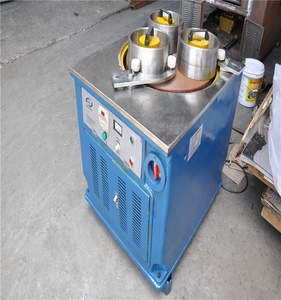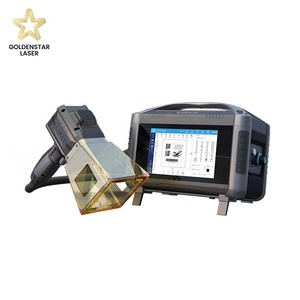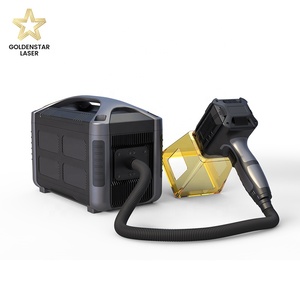
All categories
Featured selections
Trade Assurance
Buyer Central
Help Center
Get the app
Become a supplier

(1414 products available)













Surface lapping machines are finishing machines for achieving a specific surface texture or roughness on materials like metals and ceramics. They are an integral part of manufacturing pipelines, valves, fittings, and other things used in the oil-and-gas, plumbing, and other industries. Companies that specialize in manufacturing these materials may want to invest in a lapping machine that fits their needs.
Other types of lapping machines include vibration lapping machines, which use vibration to lap the surface of a workpiece; wet lapping machines, which use a wet medium to assist with the lapping process; and dry lapping machines, which use no wet medium, to name a few. Ultrasonic lapping machines use ultrasound in addition to or instead of a vibrating element.
Lapping applies to a wide range of industries and materials. Here are some common examples of what kinds of things are lapped with lapping machines.
Optical glass surfaces such as lenses, mirrors, and prisms are lapped to achieve a high level of flatness and surface roughness essential for proper light transmission and imaging.
Centric and eccentric discs are lapping machines accessories used to enhance the quality of lapping and polishing operations. Lapping and polishing discs for the surface plate are usually made of high-quality leather, which is then cemented to a sturdy wooden base. The leathers are then sometimes used to lap and polish metallic and non-metallic items, including discs, cylinders, squares, and asymmetric forms, that need to be treated to achieve a mirror or, at the very least, a shiny finish. The process of lapping and polishing is an essential and necessary step before any object is put through the test to see how hard it is, particularly in geology. The object is usually polished to see through the translucent parts. When it comes to hardness tests for geological specimens, these may include rocks, minerals, and concrete, among others.
Powder metallurgy is an emerging industry that manufactures metal parts with high strength, excellent corrosion resistance, and stability. Parts made with powder metallurgy may include anything from 50% to 75%, depending on the chemical constitution and physical structure. Metal parts include filters, bearings, bushings, sprockets, gears, flywheels, helical gears, friction plates, and rotary brakes. Not all powder metallic parts are lapped; those that are usually include precision holes and require excellent surface finish and dimensional accuracy.
Semiconductor devices, such as silicon wafers, are lapped to achieve precise thickness control and uniformity across the wafer, ensuring consistent performance in electronic and photovoltaic applications.
Medical devices like stents, implants, and surgical instruments often undergo lapping to attain smooth edges and precise dimensions, promoting functionality and biocompatibility.
Mechanical components like valves, seals, bearings, and guideways may be lapped to enhance surface quality, reduce friction, and improve the reliability of the assemblies and parts.
The following tips will help business buyers to select the right lapping machine for their purposes:
Workpiece materials and compatibility
Confirm that the lapping machine can process the materials used to manufacture workpieces. Different machines work with specific materials, so choose one that matches the material used to make workpieces. For example, some lapping machines handle only metal and ceramic workpieces. It's also important to verify the machine's compatibility with workpieces in terms of size and geometric complexity.
Surface finish requirements
Select a lapping machine that achieves the desired surface quality. Lapping machines have various designs, operations, and abrasives. The process may not yield the same surface finish when an unsuitable machine is used for a particular workpiece material.
Production volume and efficiency
The type of lapping machine chosen will depend on the number of workpieces that need to be processed during routine operations. Automated lapping machines are preferred when high production volumes must be sustained, as they offer greater efficiency. Manual machines are sufficient for low-volume production with periodic processing.
Process control and automation
Choose a lapping machine with the required level of automation and process control features. Some machines have digital controls and automatic feeding systems for precise control. Others have manual setup with basic control features. Select the machine that provides the desired process control and automation.
Available floor space
Business buyers with limited floor space should consider the machine's dimensions and its space requirement. Be sure the machine will fit in the work area after leaving the required space for maintenance and operation.
Cost and budget considerations
Balance the factors discussed previously with the total cost of the lapping machine. It's important to consider the initial purchase price and operating costs over the machine's lifespan. This includes maintenance cost, energy consumption, and spare parts cost.
Supplier reputation and support
Select a machine from a surface lapping machine supplier with a good reputation in the industry. The supplier should offer good customer support, including spare parts availability and technical support. A dependable supplier makes it easy to source machine parts and receive prompt support whenever needed.
Q1: Is lapping better than polishing?
A1: While polishing can deliver excellent flatness and the desired finish, it probably won't achieve the same degree of flatness as lapping. Moreover, lapping is more efficient than polishing when working with many pieces or large ones. This is because, in the latter situation, the cost of labor becomes prohibitive.
Q2: What are the facets of lapping machines?
A2: Lapping machines have numerous facets, such as working plates, fixed abrasive plates, and thin-film plates. The latter typically uses diamond as an abrasive, which offers the least material removal rate but the finest possible level of control and flatness. Water or oil can act as a carrier for the diamond to help control the amount of material removed.
Q3: What are the configurations of lapping machines?
A3: According to the way the workpiece and abrasive interact, lapping machines' configurations include the fixation of the workpiece, the motion of abrasive particles, and the motion of the machine itself. Different configurations lead to various types of surface lapping machines.
Q4: Can people perform lapping at home?
A4: People can do lapping at home, provided they have the proper equipment and experience. It is, however, not advisable because improper lapping can damage the surface of the workpiece. Industrial lapping machines are more effective than home-made models.